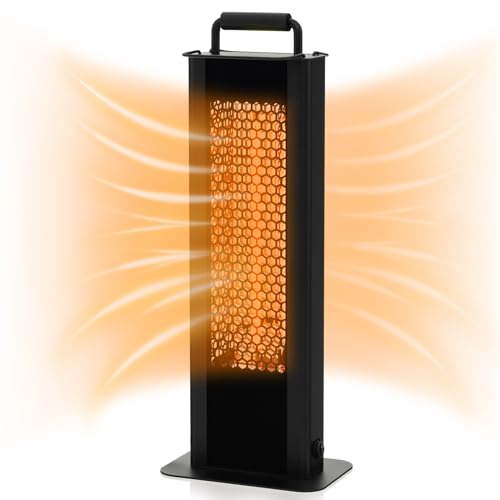How to Choose a Patio Heat Lamp Electric
When you want to heat your patio, there are many options. In contrast to propane models that require refills, electric heaters can deliver instant heat by flicking the switch or pressing a button.
They also don't release gases that could cause health risks. Some units are equipped with adjustable heating settings to accommodate different distances.

Heater Type
You can relax outside well into the evening and throughout the year with the proper patio heater. Patio heaters are available in many different styles that include freestanding propane or natural gas models, as well as ceiling or wall mounted electric radiant heaters. Your choice depends on the dimensions of your patio, your power source and personal preference.
Most patio heaters are powered by electricity or liquid or natural gas and produce heat through convection as well as radiant heating. The output of heat from patio heaters is measured in watts, which can be converted into British thermal units (BTUs) to provide a comparison. Some also have adjustable heat settings to allow for greater flexibility.
Patio heat lamps incorporate a burner mounted on a pole with a perforated screen that reflects the flames and radiates heat downwards to warm objects, people and furniture. donyer power electric patio heater have a reflector above the burner that can be silvered to cut down the amount of heat emitted upwards.
Gas patio heaters are among the most commonly used heaters for patios. They can heat multiple tables quickly and evenly. They can be portable and run off a propane tank or plumbed into your natural gas line which is greater convenience and lower initial installation costs, but also requiring an ongoing cost of fuel.
Gas patio heaters are becoming increasingly popular as more houses have natural gas lines. These heaters are easy to install, but they require a gas line that's properly installed and operating to ensure safety. There are portable natural gas heaters equipped with extension hoses which can aid in overcoming this issue however they could create a tripping hazard and a fire risk when not being used.
Safety
Electric patio heaters can be used in enclosed areas since they allow heat to radiate upward and not outward. They are not designed to be used on an unprotected roof. The heater must be located at least 6" away from the ceiling or 18" away from the wall adjacent to avoid fire hazards.
The propane and gas patio heaters are usually safe to install in enclosed areas with the proper cover specifically designed for use in open air. They are usually constructed of fire-retardant fabric and have an open roof that can be closed. The safety concerns with these kinds of outdoor patio heaters are due to the flame and fumes they release. They should be kept away from objects that can ignite, such as chairs and curtains.
When installing an electric patio heat lamp or any other type of patio heater, be sure to follow the manufacturer's directions and safety precautions carefully. Select a heater that has received UL and CSA safety certifications. Also, be sure to go through the owner's instructions thoroughly. Make sure that the heater is not within the reach of pets and children. Some patio heaters that stand on their own such as EUROM's come with an automatic tipping safety that shuts off the device if it falls.
If your patio heater is connected to a natural gas line it is essential to inspect the condition of the line periodically and to be tested for leaks by a qualified professional. If the line needs to be replaced get it replaced by a licensed plumbing professional. A professional will be in a position to determine if the line is required to be routed through an underground pipe or not. Additionally, a professional can make sure the heater for your patio is connected into an outlet that is GFCI (ground fault circuit interrupter) rated to protect against electrical shocks and fires.
Installation
The height of the patio heater determines how much heat it radiates into the space. The heater should be placed away from surfaces like wood and plastic that can deform. Depending on the model of the heater you may choose to mount it on a wall or a structure using standard mounting brackets. Some models have soft start, which decreases the peak current in order to protect your circuits.
